The state of the dental lab in 2016
A recent Dental Lab Products survey sought to learn the level of satisfaction that lab owners, technicians and other employees take in their careers. Here's what we found.

A recent Dental Lab Products survey sought to learn the level of satisfaction that lab owners, technicians and other employees take in their careers. Answers ran the gamut, but respondents said that they gravitated to the industry because of a love of both art and science; career satisfaction is somewhat low; and money-like any career-seems to be the biggest source of stress.
There were 301 total respondents. Of those, 74 percent were the lab owners and nine percent were lab technicians. Eighty-four percent of respondents were male. Seventy-one percent were Baby Boomers, while 19 percent were from Generation X. Seventy-six percent said they’d been working in the industry for 21 years or more.
Related reading: Hourly and annual salary data for dental laboratories
The majority-67 percent-work in specialty labs performing mostly crown and bridge work. A third were one-person labs, and 42 percent came from labs with gross incomes between $100,000 and $500,000.
Technology and Artistry
The biggest reason people chose a career in the dental laboratory (52 percent) is because of an interest in both technology and artistry.
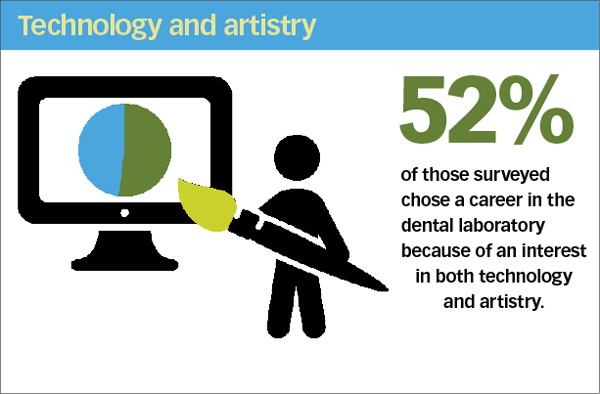
Most said that they were very satisfied or somewhat satisfied with their ability to use artistry and creativity and use scientific/engineering knowledge and skills.
“In some respects the tools people are using to do it are obviously changing,” observes Bennett Napier, Executive Director of the National Association of Dental Laboratories (NADL). “Even if the lab that they own or that they are working in has digital technology, the person that’s using that technology still has to have an artistic and scientific perspective. When they’re looking at digital design of the restoration, they still have to have the ability to use that part of their skill set and passion, and then, depending on what tools they’re using, they’re still going to be doing some finishing and artistic frame at the end of their milling, so it’s not lost completely. They’ve had to redirect some of it.”
Trending: Unpacking hourly and annual salary data for dental technicians
Lab professionals must be able to balance both the artistic and the technological demands to produce quality restorations.
“I think the presence of artistry still remains very strong in terms of the handwork, but also on the digital side,” adds Rob Nazzal, CEO of Custom Automated Prosthetics (CAP) in Stoneham, Mass. “These machines don’t design automatically without any human direction, especially on the larger restorations. There’s still a substantial amount of design that needs to be done, and CAD/CAM equipment is another tool in the toolbox to create restorations that are both functional and beautiful. I have this analogy: If you compare building a house with a hammer versus building a house with a nail gun, either tool could be used to create an ugly or a beautiful house. The skill, creativity, and craftsmanship of the builder or the dental tech are still central to the success of the project.”
On-the-Job Happiness
Looking at the numbers, one might conclude that dental lab technicians aren’t very happy. Only 44 percent say they are “very happy with their job,” while 25 percent say that they are either tolerating their job or miserable at work. That means the rest are in the middle somewhere.
To a certain extent, job satisfaction depends on one’s role.
“For me, I’m teaching people, so it’s always satisfying when you talk to somebody afterward and spend a couple days with them in their labs or when they come to the course and they say, ‘You know, I never thought of that,’” says Mark Ferguson, General Manager at Vulcan Custom Dental in Birmingham, Ala. “But, then again, looking at more day-to-day technicians who are working at a bench, and that’s what they do every day, there’s a huge sense of satisfaction in looking at your artistry, because I think all of the technicians-whether working on a computer, working analog with a porcelain brush or a waxer or whatever-it’s hard. So there’s always that satisfaction of looking down and saying, ‘I made this.’ It has always been the driving force for me working at a bench.”
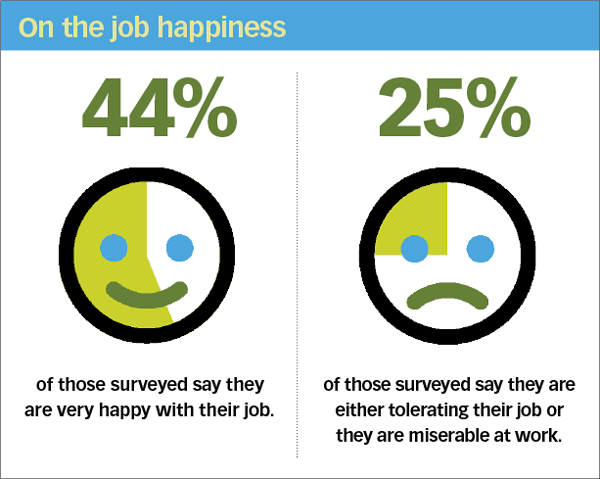
But for all the people in the middle who are not in love with their jobs, there are others who do love their work. Dan Elfring, an in-house lab tech at Pickle Prosthodontics in Colorado Springs, Colo., says that he is very happy in the career. So what does he love about it?
“In one word, it would be ‘everything,’ ”Elfring says. “I get to work directly with the patients and get to see the things that I make get delivered. I get to see how they like it, what changes I can make. Basically, I’m an oral architect and designing a replacement for a patient’s natural dentition so they can eat and smile and change their life. The whole process is very satisfying to me.”
Winning BIG
One of the more interesting-and telling-questions in the survey asks: “If you won $10 million in the lottery, would you continue working?” A majority of respondents-60 percent-said, “no.” Does this indicate a lack of passion for the work?
Related: What does the sharp decline in dental labs REALLY mean?
“Well, I’m one of those that does it for the passion, and I think a lot of it is I just found a niche that I really enjoy,” Elfring says. “When I was in the Air Force, I did a lot of crown and bridge work. I really liked the lab work and I didn’t do many dentures at all. Now the lab work that I do is primarily doing removable work, and I just love doing it. A lot of that is just matching the right skills-like a personality profile where you match that person’s personality to their job. Some people are very detail-oriented and very meticulous. Those people would like laboratory work, but others who aren’t probably wouldn’t like it as much. For me, I couldn’t think of a job that I would be better suited for.”
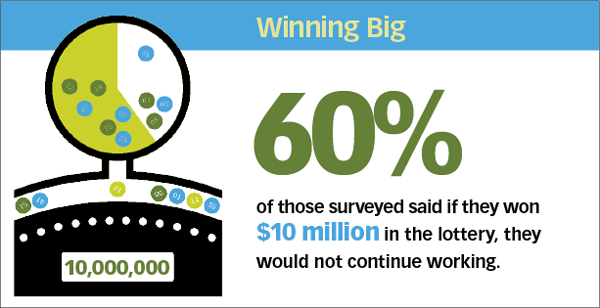
Nazzal notes that being well versed in one’s craft can help bolster that passion.
“A lot of continued interest in this work is going to come from education,” Nazzal says. “When you invest in learning something new, such as advanced techniques or exploring a new way to expand your business, it can be reinvigorating. I really believe that maintaining a commitment to education and quality will yield that opportunity to move up out of the commodity world. When you’re competing in the commodity world of $99 single-unit crowns, that’s where I can see people saying, ‘I just don’t want to keep doing this.’ But if you can move up into being better and different and being more profitable, that’s what keeps people engaged.”
Rekindle the Fire
For those that have lost their passion for lab work, there are some prospects for rejuvenation. Elfring embraces social media as a source of creative inspiration.
“When I see other people posting this beautiful work, it’s motivating for me to try and bring my skill sets up to a level like that,” Elfring says. “The Internet and social media may be one way to reach out to those people and show them what’s possible. And how, if someone is struggling with a task or procedure or process, they can tap into a wealth of information and people who can help solve their problems, so they don’t remain frustrated and can grow as a technician.”
Product roundup: CAD/CAM software
Napier suggests advances in digital dentistry can provide motivational opportunities.
“They might want to be open to incorporating some digital elements into their lab, at least where they’re strategically partnering with a manufacturer or a supplier that can allow them to broaden their product offerings, which maybe would help drive some of their revenue up, which would help their responses relative to their working more hours than they used to and making less money,” Napier says. “If they used technology or use some of these supplier/vendor relationships to do different types of products that maybe they don’t want to do in-house, they could do a piece of it and then outsource some other elements that would potentially allow them to broaden their sales to both existing and additional dental clients.”
Nazzal sees the effects of rejuvenation through innovation every day-it has rekindled a flame within his partner, Bob Cohen.
The List: 10 implant trends you need to know
“He really became invigorated by the changes, because there had been such a long period of time where the changes were very incremental and it was just more of the same,” Nazzal says. “I think he was very excited to see how CAD/CAM really streamlined the process, and brought all kinds of interesting changes that create a lot of newness in our industry.”
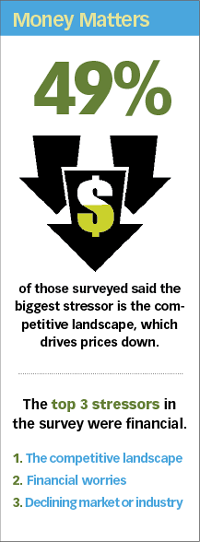
Money Matters
As with any career, money is an important issue-if not the most important. Respondents identified fierce competition and overseas outsourcing as threats to their bottom lines. Forty-nine percent said that the biggest stressor is the competitive landscape, which drives prices down. In fact, of all the 11 stressors presented as options in the survey, the top three were related to finances (the competitive landscape, financial worries and declining market or industry).
Diversification is one way to mitigate financial concerns.
“Let’s just use an example,” Napier illustrates. “If they’re only doing crown and bridge, and that is the biggest piece of the lab market, but that’s also where you see the highest price competitions. So if they’re not doing implants, if they’re not doing removables, if they’re not doing what I call ‘chairside services,’ sleep apnea devices, those are areas where there’s not as much price competition, and in some cases the average selling price has been going up. What they can do is diversify and balance that out by looking at some other product categories if they’re not doing them already. That’s something, definitely, to consider.”
While offering a variety of products is one way to make more money, focusing on business relationships shouldn’t be overlooked.
“The ability to make money comes from relationships,” Ferguson says. “As much as technology and as much as our industry is changing, the one thing that really hasn’t changed is the relationship between the doctor and the technician, and that relationship, for most of these transactions, is why a doctor chooses to send work to your lab, as opposed to somebody else’s lab. One of the best things people can do to keep their business going is not trying to compete on price, but compete on relationships and strengthen the relationships you have with your doctors. Be open with them and hope that they’ll be open with you, as well. I think that really feeds on itself and strengthens that bond.”
Stressors
Money isn’t the only source of stress for dental labs. It comes at owners and technicians from different directions.
“I think that hasn’t changed probably for the last century,” Ferguson says. “It’s the due date at the end of the case. Every case, you have that due date looming over you, and that’s the biggest stress factor. It’s also where people end up having the most problems, because as technicians we know we have that due date, and we know we have to meet that due date. So how do we meet it? We meet it by doing the same things we’ve always done. So a lot of times you end up not listening to things or not doing new techniques, just because you can’t afford to do things twice.”
Case complexity is another source of stress.
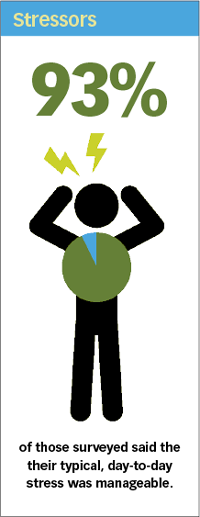
“Many of our cases were referred by some other doctors who it was above their skill set, so they’re referred to a specialist,” Elfring observes. “So we’re dealing with patients who are very challenging, and those patients challenge my skills to come up with viable solutions for good restorative options. The challenge of it is stressful, because sometimes you can’t provide a result that you are happy with, even though it may be the best option available.”
Many of the survey respondents worked in small labs where the owners have to do many different jobs, in addition to working as lab techs.
“They’re doing everything,” Napier says. “They’re running the business; they’re the ones that are actually doing the production to bring the money in-they’ve got a lot of hats.”
“What I’ve found with most lab owners is that it’s not being a business owner that’s the exciting part for them. What’s exciting for them is the creating, the technician part, and being the owner is really more about freedom and being your own boss,” Nazzal adds. “I think many lab owners, especially in smaller businesses, have come to understand all the headaches that come along with owning a business.”
Napier suggests, in such cases, the lab owner outsource some of the business operations work, if they are financially able.
“Based on the stressors that were identified, any of those stressors that relate to human resources: working with an outside payroll company; working with an outside benefits administration company; looking at a staff leasing arrangement-the owner/manager who’s also probably working as a technician could have somebody else fill some of those functions.”
Happily, however, 93 percent said their typical, day-to-day stress was manageable.
Next page: Would you recommend this job to your children?
Passing Along the Craft
Another very telling question asks, “Would you recommend that your child or child’s friend pursue a career as a dental technician?” Sixty-five percent of respondents said, “no.” It is also interesting, because in another question, 48 percent of respondents said that a friend or relative already in the profession had influenced them to pursue lab work.
Napier observes that the marketplace is challenging. Most of the respondents work at one- to three-person labs and are feeling a lot of financial anxiety.
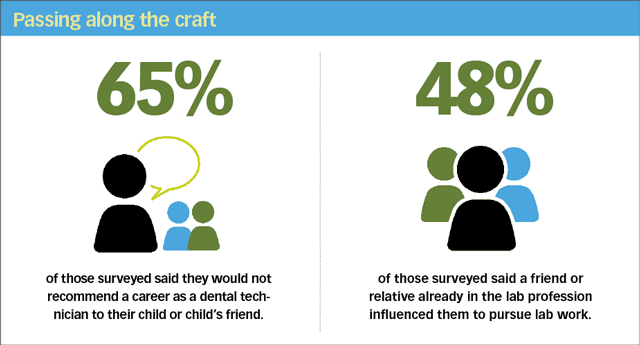
“They’re the ones that are feeling the most pressure of the overall market conditions or competitive nature of the marketplace,” he notes. “You can have a one-man dental lab that’s completely digital and highly productive, and have a high revenue stream in terms of gross, but if it’s a one-person lab that’s using the traditional methods, those types of things, and you look at the gross sales of these labs based on the responses, I think all of those things tie together. So I’m not surprised that their responses are that they’re not happy with where they are. Any of us, if we’re sitting in their shoes, would have a negative perception of what’s happening. I think you have to take all of that into account, because the people who maybe are bringing in more revenue using some different approaches in terms of technology, it seems that the responses are different in terms of their optimism.”
Some of the opinions expressed in the survey include:
- I feel it isn’t a good career choice any more, because of the undercuts in wages and prices. The fees people are charging now do not compensate for the knowledge and artistry that is expected.
- There’s a lot of jobs in this country that pay a lot more money and offer better benefits.
- The job is not compensated well for the amount of skill and knowledge required.
Not everyone had a negative view about his or her child or a child’s friend working in a dental lab. Indeed, some are already preparing their children for a career in the industry:
- My daughter is taking over the business for me, because at the end of the day, you can be proud of the things we have accomplished and excited about the things to come.
- My sons are taking over the company. There has never been a better time to enter the field.
- My son works for me, hoping to take over some day. I have mixed emotions about what his future will be in this field. Outsourcing and big conglomerate labs are huge competition for small labs like ours.
- If they have a strong interest in the field, then I would tell them to follow their heart.
Next page: What the future might hold ...
CAD/CAM
Not surprisingly, CAD/CAM was mentioned prominently in the survey. Some embrace it as important to the future of lab work, while others identified it as a negative, observing it as a downfall of the industry. Must labs embrace digital dentistry or do they face being left behind?
Must read: 21 CAD tips to take your work to the next level
“It’s not a black and white answer, because there are so many variables to it,” Napier says. “If they’re not doing anything digital-at all-then I think they’re going to have a hard road ahead. I’m not saying everybody should go run out and buy a CAD/CAM system, but if they don’t at least have a scanner, where they’re able to accept digital files coming in, those types of things, they’re automatically putting themselves in the position where, whether it’s a prospective client who wants to reach them through digital technology or a supplier/vendor relationship that they want to have and utilize all the resources that are available through the digital workflow platform, they’ve already kind of put themselves in the position where there’s a segment of the marketplace that they’re not going to get any benefit out of. I think they can, strategically, make decisions on, ‘Okay, how do I get my foot at least in the door, get my feet wet, that’s not going to break the bank, but also allow me to potentially diversify some of the things I’m able to do?’ There clearly are some labs that are completely doing it the analog way, the traditional way, that are still profitable out there.”
Materials only available because of digital dentistry are another variable when considering one’s presence in the digital world.
From traditional to now: Taking your lab digital the RIGHT way
“I don’t believe in digital for the sake of digital,” Nazzal adds. “I believe in delivering the best product for the patient. Right now we have some beautiful materials that are very strong and esthetic that just can’t be done without digital. Then you could say, ‘Well, I think labs that are looking to thrive will need to have access to those materials,’ and depending on their situation, in terms of their volume and their internal capabilities, they need to make the choice as to whether they’re going to outsource the whole thing, or just outsource the fabrication, or bring it all in house, and I don’t think there’s much of a choice anymore about whether zirconia is an important part of any lab’s offering.”
“One of the best things about CAD/CAM currently is the ability to start slow, and most of my labs are doing some sort of CAD/CAM for their doctors,” Ferguson says. “And that could just be pouring up a model and sending it out to somebody else to scan and design. I would say, ‘Is it worth $80,000 to save $50 a crown?’ At that point, that’s a whole lot of crowns to make your money. As technicians and as lab owners, the feeling has always been to protect what you have, protect what you’re doing. That final artistry is really where you want to protect it. If you can have partners that you can work with, then allow yourself to spend an extra couple bucks on something, but that’s going to give you, as a technician or lab owner, more time. And that’s the other thing is that in the dental fields-clinical, laboratory, everything-we don’t value our time as money.”
CAD/CAM may not be a key component of every lab yet, but it seems to continue making in-roads into all facets of the dental lab world.
Mark Ferguson: Why it's time to take your workflow digital
“I have noticed that CAD/CAM is slowly replacing some people,” Elfring observes. “Because big labs are downsizing-and then those laboratories are trying to train their technicians to do other skillsets, like removable work-CAD/CAM is entering into the removal arena real quick with the AvaDent and PALA Digital. In the last year it’s made a lot of headway, so CAD/CAM people are going to have to start to learn to embrace it or see where they can utilize it, because it is coming.”
While many of the respondents identified sources of stress, concern and worry, ultimately, a lot of people in the industry still enjoy their work.
“Seeing how many people are happy with their job-that’s the highest response-that’s really exciting,” Ferguson says. “Currently we’re looking at a shrinkage in our labor force, but if people are happy with their job, then that excitement can transfer to a continued workflow.”
Product Bites – January 19, 2024
January 19th 2024Product Bites makes sure you don't miss the next innovation for your practice. This week's Product Bites podcast features new launches from Adravision, Formlabs, Owandy Radiology, Henry Schein Orthodontics, Dental Creations, and Dental Blue Box. [5 Minutes]
Product Bites – December 22, 2023
December 22nd 2023The weekly new products podcast from Dental Products Report is back. With a quick look at all of the newest dental product launches, Product Bites makes sure you don't miss the next innovation for your practice. This week's Product Bites podcast features updated software from Medit. [2 Minutes]
Oral Health Pavilion at HLTH 2024 Highlighted Links Between Dental and General Health
November 4th 2024At HLTH 2024, CareQuest, Colgate-Palmolive, Henry Schein, and PDS Health launched an Oral Health Pavilion to showcase how integrating oral and general health can improve patient outcomes and reduce costs.